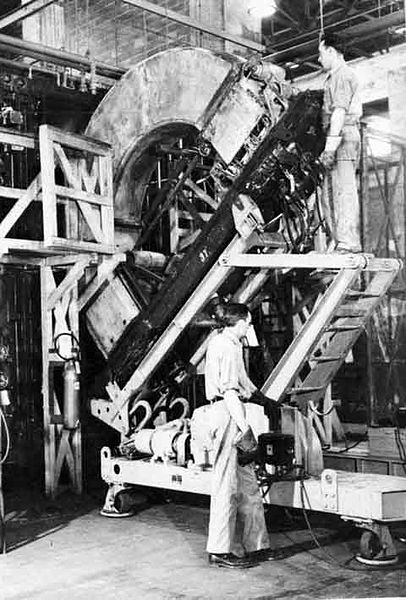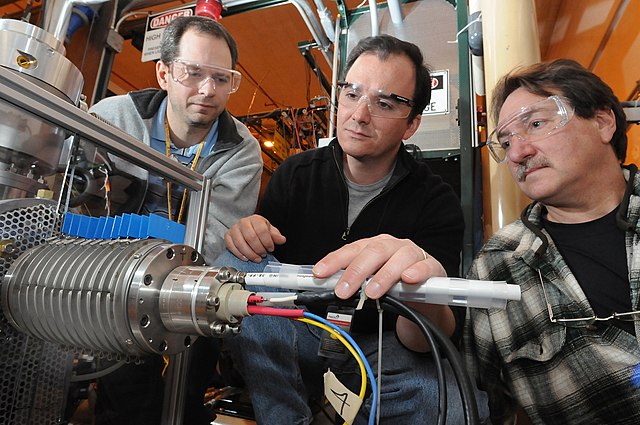Mass spectrometry (MS) is an analytical technique that is used to measure the mass-to-charge ratio of ions. The results are presented as a mass spectrum, a plot of intensity as a function of the mass-to-charge ratio. Mass spectrometry is used in many different fields and is applied to pure samples as well as complex mixtures.
Discovery of Neon Isotopes
Replica of F.W. Aston's third mass spectrometer
Calutron mass spectrometers were used in the Manhattan Project for uranium enrichment.
Surface ionization source at the Argonne National Laboratory linear accelerator
The mass-to-charge ratio (m/Q) is a physical quantity relating the mass (quantity of matter) and the electric charge of a given particle, expressed in units of kilograms per coulomb (kg/C). It is most widely used in the electrodynamics of charged particles, e.g. in electron optics and ion optics.
Beam of electrons moving in a circle in a Teltron tube, due to the presence of a magnetic field. Purple light is emitted along the electron path, due to the electrons colliding with gas molecules in the bulb. Mass-to-charge ratio of the electron can be measured in this apparatus by comparing the radius of the purple circle, the strength of the magnetic field, and the voltage on the electron gun. The mass and charge cannot be separately measured this way—only their ratio.





